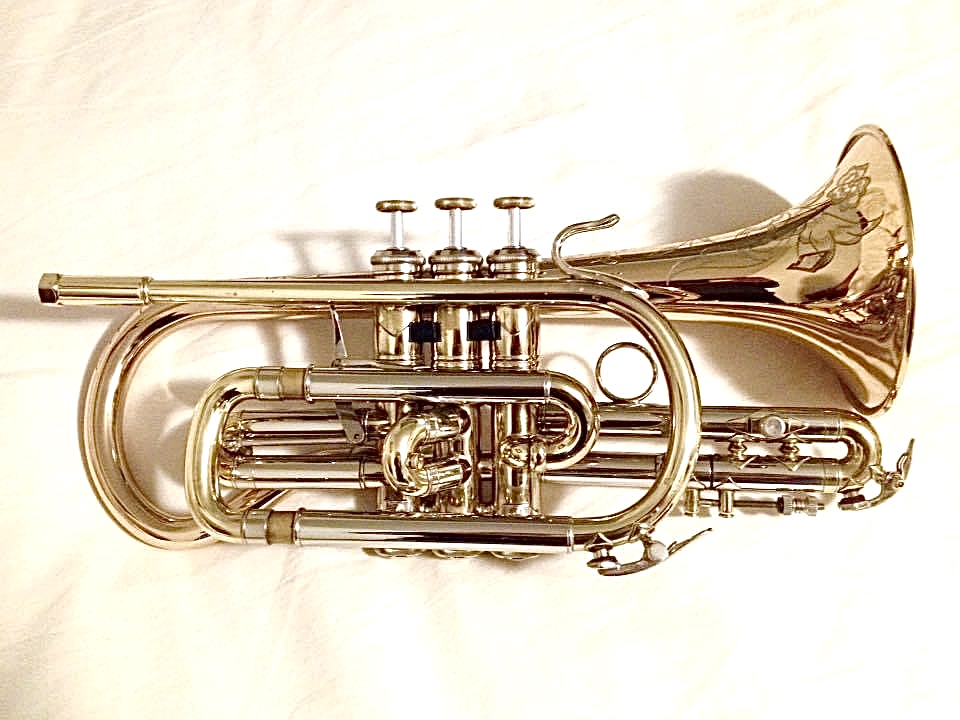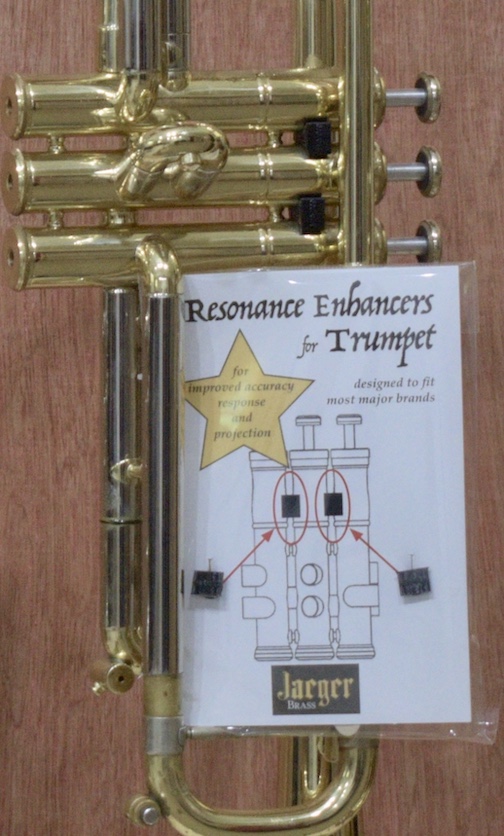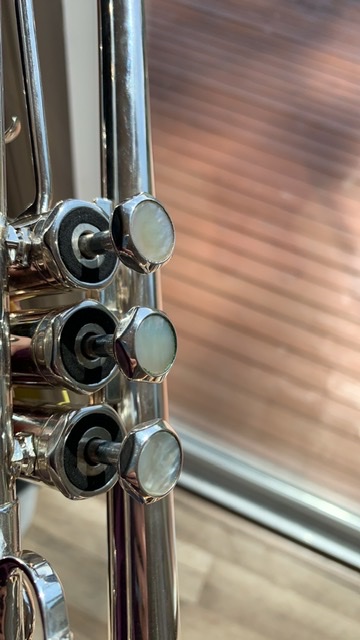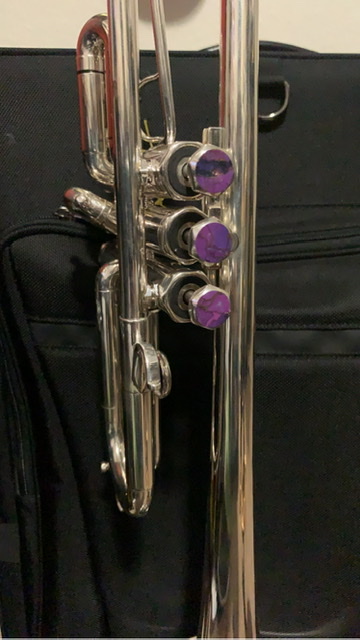I Think ≠ It Is!
-
A recent note from a concerned parent:
Please forgive my naive questions, what about xxxx for trumpets, I read people trying different xxxx for their trumpets. You have any thoughts on this?
My reply:
Thank you for your question, better to have admitted naivety than have an empty checkbook! Yes there are many different options available for trumpets;, lead pipes, bells, special valves, water keys. These are normally offered as an option when new - like cars having automatic or manual gearboxes. But as in the car comparison, it is a very big deal to change an existing setup, it is not just the different component, it is how it fits and affects the whole instrument.
A lot of people think a lot of things about brass instruments; brainwashing and self-delusion is rampant! Think of these examples:
I want a stronger water key spring so I need one with more coils.
Wrong! A fewer number of coils make a spring stronger; a straight piece of wire (no coils) is stronger than one with one coil.
My trumpet has too much resistance, there must be a blockage.
Probably wrong. If the trumpet is hard to play there is likely some leakage exactly where the sound wave wants to have high pressure (pressure antinode). The pressure wants to escape, therefore the player has to work harder to maintain the resonance. In this case I would check for leaky water key or joints, or worn valves.
Remember; there is no computer model that will predict what will happen if you change xxxx.
Data is empirical = knowledge comes from experimentation.
“I think” does not equal “It is”.
As a player/instrument designer and builder/teacher/writer my specialty is to talk about these things, to bring peace to playing situations and to encourage a better relationship between player and instrument. This is best done in person and it is why we have such a comfortable setting here - my workshop/factory and the large music room. It is also why we started the not for profit foundation “The Recreational Musician” dba “Trumpet4Fun”.
Arm yourself with reputable equipment and concentrate on playing music.
-
Most of the time, the pimps simply demonstrate that the owner had no process for picking the right horn in the first place. If they did, generally they can find one that does what its supposed to without any pimp. For instance, they buy a Bach 180 model, but do not like that much "core", so they unbalance the design with a pimp, normally making something worse for every thing that is viewed as "positive".
I can't count how many Bach owners drilled out the throat of their mouthpiece to "fix" something that was not broken - or to compensate for something that was not right instead of fixing it.
-
I sympathise. Don't instrument makers generally account for all the variables and how they affect each other and design a horn accordingly? And when you change various parts of a horn, aren't you messing with the original design, allegedly the optimum balance of elements, already?
Just to be clear, if a player is advanced enough and sensitive enough, he may benefit from changes but isn't most of this just pipe dream? And how many of us are really that advanced enough and sensitive enough?
-
I pimped a couple of my Bachs with something called Resonance Enhancers, and they do seem to work...

-
@Kehaulani All of us are sensitive enough to notice. I have had rank beginners noticing incremental changes in design.
-
@Dale-Proctor I still must admit that I don't understand what the Resonance Enhancers are actually doing. But, whatever it is, they do it on all the designs I have tried it on. So, presumably they are addressing a design (deficiency) common to all trumpets????
-
@Trumpetsplus said in I Think ≠ It Is!:
@Kehaulani All of us are sensitive enough to notice. I have had rank beginners noticing incremental changes in design.
Perhaps I should've said "enhanced".
-
This post is deleted! -
@Trumpetsplus said in I Think ≠ It Is!:
@Dale-Proctor I still must admit that I don't understand what the Resonance Enhancers are actually doing. But, whatever it is, they do it on all the designs I have tried it on. So, presumably they are addressing a design (deficiency) common to all trumpets????
I think they solidify the valve block, since the majority of trumpets and cornets leave the upper half (or more) of the 1st and 3rd valves unconnected. Your enhancers give those valves a connection to the 2nd valve, So they all share the bell and mouth pipe bracing. They do work, providing any of the good effects sometimes gained by heavy bottom caps, without any of the drawbacks.

-
@Dale-Proctor They also work well on the Jaeger trumpets which are the only trumpets now made with braces between the balusters. That is, the valve casings are one-piece. I know no other brand with one-piece valve casings

-
@Dale-Proctor said in I Think ≠ It Is!:
I pimped a couple of my Bachs with something called Resonance Enhancers, and they do seem to work...

How do they work? Tone, intonation, flexibility, what? Thanks.
-
I find they add a bit of richness and clarity to the tone, as well as making the slotting slightly more secure on my Bachs.
-
@Trumpetsplus said in I Think ≠ It Is!:
@Dale-Proctor They also work well on the Jaeger trumpets which are the only trumpets now made with braces between the balusters. That is, the valve casings are one-piece. I know no other brand with one-piece valve casings

Yes, I’ve noticed the upper valve braces on your trumpets, and thought your positive experience with them led you to develop the “universal braces” for other trumpets. I’m a little surprised that the resonance enhancers improve on that.
-
I have Ivan's Resonance Enhancers on several of my trumpets, I concur they have made a difference. my thoughts are that they dampen spurius resonances in the valve block.
One trumpet that they did not have much effect is a German Alexander, it has 3 sets of braces between the valves.
I am in the process of setting up my spectrum analyzer again, it will be interesting to see the effects before and after.
Regards, Stuart.
-
@stumac Please share your findings with us.
-
Here’s the only thing I’ve done lately to pimp any of my horns - pearls on my C5L were worn out, so I had my buddy Brent (PUJE trumpets) replace them with stones. They turned out nice, and are much better than the worn, uneven surface of the old pearls! He offered to sell me the inlays, but I have enough projects and he’s all set up for it. I’d already put it off long enough!
I tend to buy horns I already like and switch them out when I don’t. I’ve play tested enough to realize that you can play horns from different manufacturers with the same features and they will be completely different. With some manufacturers multiple horns of the same model feel completely different! I’ve also realized that horns are tools, and as players we grow and change. What worked for you 10yrs ago may be holding you back today, and there’s no shame in switching to something that suits your needs better.


-
My only pimp was my Olds Ambassador. The horn was in the family many decades, my brother being the last user who essentially destroyed it. I got it back from him and decided it needed nothing less than a resurrection and sent it to Tom Green to work his magic. I had no preexisting expectations but when it was returned I had a horn that played right up there with my Committee.
-
I didn't expect this to turn into a Resonance Enhancer page (Thanks Dale!), so I put up a short video demonstrating them on a Bach 37
-
@Trumpetsplus: the resonance enhancers are a simple way to non invasively try something out. The benefits are certainly better than heavy caps for most instruments that I have tried them on. They have an effect similar to putting supports between the leadpipe and valve 1 and 3 instead of only on #2.
-
@Trumpetsplus said in I Think ≠ It Is!:
@Kehaulani All of us are sensitive enough to notice. I have had rank beginners noticing incremental changes in design.Ivan, no disrespect intended, but if this is the case, why don't you do it to begin with?